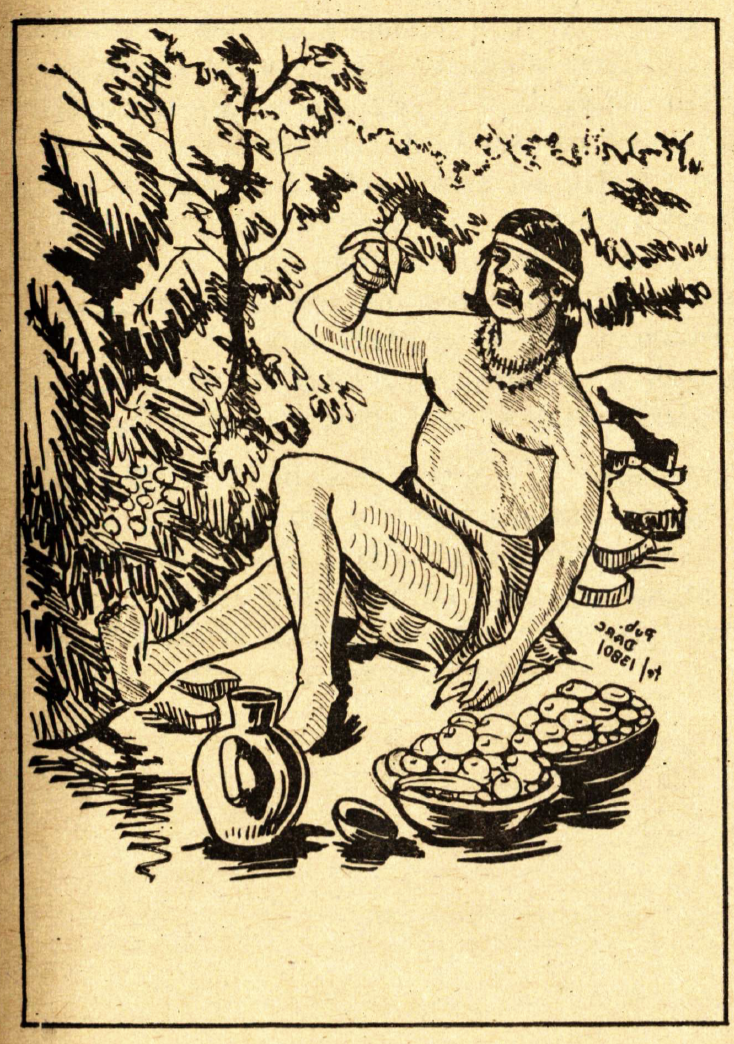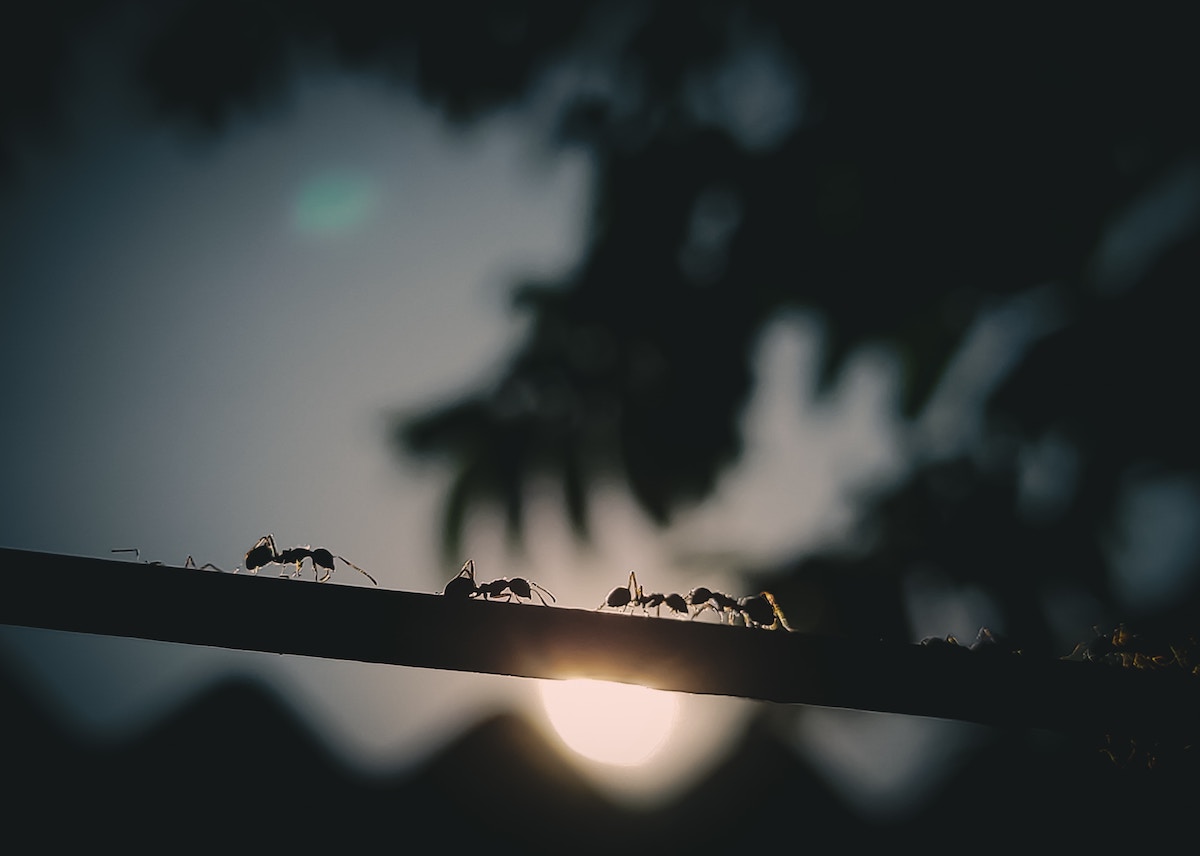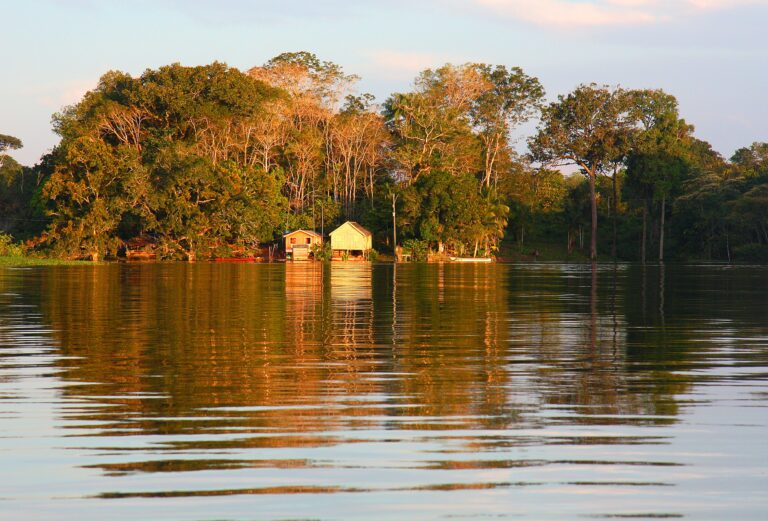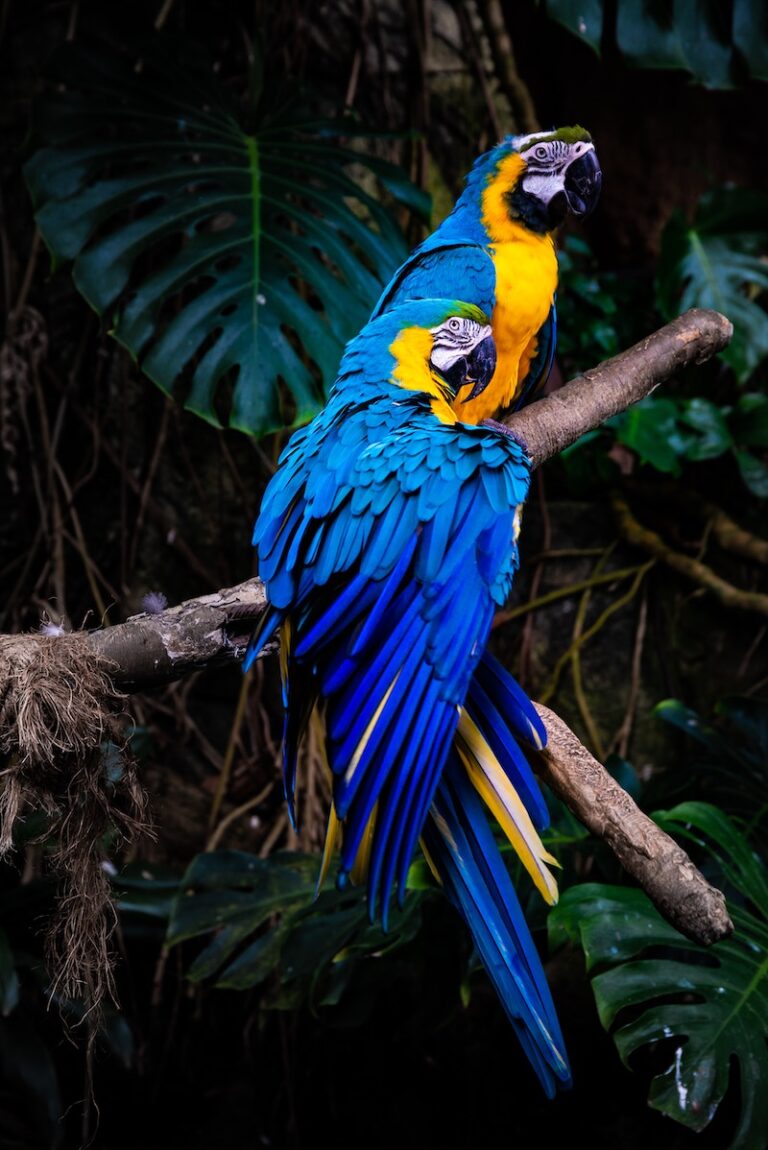The Ant
In general, you cannot see dwarfs in the jungle, but if they are there, one should procure their friendship because they are quite helpful and generous. Once they give you something, they keep helping you, and you want more every time.
As most people in the jungle are copper or cinnamon colored and have a straight, poised garb, both men and women stand tall and face the surrounding fauna and flora in their full selves. One night, at the beginning of times, the moon was rarely seen on the dark horizon as a full disk of silver light shining downward toward a bend of the sleepy river. This meandering continuum was repeated over and over along the flat, muddy surface of the flooded forest floor, creating a labyrinthic array of twists and turns that made it very difficult to navigate with single-person canoes or to walk on pedestrian pathways.
Out of those times of diminished sunrays and filled with dark selenitic reflections, a baby was born, neither with the cinnamon tint nor with the black hair and ebony eyes; he had fair skin and grew to become the killawawa, or son of the moon. His short stature and white appearance scared other children away. Even when he was old enough for marriage, he could not find a suitable spouse because his mere presence scared all young girls away. All but one little girl, who had been recently abducted from a distant tribe, jumped and rushed, as if recently awakened from the reflections of the sun over its many white-water whirlpools, splashes, and falls. She could not speak the language of the riverine tribe with whom she now lived but was keen on recognizing other sounds and whispers from inside the forest, as she was accustomed to listening to the murmur of the mountains in the headwaters.
And that was the reason for the two to meet: the son of the moon had called repeatedly to the innocent girl, who had playfully found a friend. Her adopted father, an elderly man unable to hunt for himself, had agreed to allow for such a companionship with the condition that the dwarf provide him with food and drinks. So, the elder found himself always enjoying delightful cassava from fresh yuca, along with mandioca, papachina, and achera tubers. A visitor from a nearby tribe saw his hut full of freshly harvested jungle fruits and recalled a continued murmur and giggles from the attic. Nobody knew where he took those from, as no one saw him or his woman sow, tend, or harvest them. He did not even bother to go out to search for them. As soon as he wanted something, a very beautiful girl (his adopted daughter from the mountainside) came down quickly with a batea tray full of goodies. His daughter has fallen in love with the dwarf, who had promised this for the pleasure of marrying her in secrecy.
They were very happy for a long time; it was like time stood still for many moons. One day, an intruder came into the hut and kidnapped the giggling girl, taking her away to a distant tribe deep inside the forest. He had her well hidden within the thatch roof, so that the palm fronds and straw would silence her cries. She cried and called his dwarf for days and nights. Her beloved dwarf searched everywhere in the gullies, brooks, lakes, chakras, and houses; he even climbed the tallest kapok trees and moriche palms to locate her cries. One crescent moon light guided him, who was also murmuring continuously with sadness for his lost love, following the echoes of her crying toward the house in the distant tribe.

On a full moon night, he found her, took her away from her prison, and walked away with her. The dwarf found a bamboo thicket very tall and thick, where he built a house for them and planted tough spines for protection from perverse men. Ever since then, no one has been able to enter the wadwales. However, a group of men from the tribe came out in force, tore the tall wadwa canes, and burned them to the ground. The shaman, who was part of the search party, conjured a curse on the dwarf, whose ashes were transported by heavy winds to the confines of the forest. Each ash falling to the ground, over stones, or over the tree branches germinated, offering a beautiful white orchid flower whose smell captivates every living creature around.
On the other hand, the shaman also cursed the girl, making her ashes disperse out and about the wadwal, with her fallen ashes converted into various insects, including ants of every size and color, bees of many types but without stings, and wasps who were able to find nurse trees or animals, so that their eggs and baby wasps could grow to maturity within the figs of the higueron tree or within the bodies of big tarantula spiders.
The murmur of the dwarf had been transformed into a very delicate aroma and a delightful savory nectar of vanilla essence. The giggles of the girl had been transformed into eloquent buzzing and effective chemical language, able to make ants, bees, and wasps the perfect engineers of the jungle. Sometimes, when the laughter of the girl was evident, the honey produced by the stingless bees was abundant and of easy reach, and the figs were abundant and provided healthy foodstuffs for people and animals of many types, including wild meat providers such as danta tapirs, monkeys, wanta, watusa, peccaries, even jaguars, bears, anacondas, and many birds.
However, when the full moon comes out in force again every month, the silent jungle hides the most horrific vengeance from the unlikely predator: the ants, who create millions of followers underground to exit in an orderly, military-like display of discipline and task readiness. The army ants create what seem to be rivers of all-devouring predators, making clearings in the jungle floor and converting entire houses into just a pile of debris, leaving a frenetic mark ahead.
Not even reaching the edge of the river or the lake stops their march… One by one, they grasp at each other’s feet, creating a round surface that grows incessantly with new arrivals, until they detach from the anchored river edge, floating and rolling down towards the other shore, to start the apocalyptic destruction by the tiny great predator of the Amazon: the ant. A distinct kind of solitary ant emerges to cause panic if it is raining or if the ant colony cannot be disturbed for some other reason: the terrifying kunga, the world’s most potent, lethal, and massive giant ant!
That is the reason why you have to show respect to everyone, foreign or not, when visiting the jungle; you must be convivial with locals and strangers to share the bounty of the forest. It is not going to be that the curse of the moonchild comes to hunt you down with sweet smells, fancy flavors, or scary deaths!
Cultural Significance
This legend has clear reference to the issue of albinism in the tropical rainforest, where the pigmentless organisms are definitely rare; quite opposite, the manifestation of melanism is quite common, giving those individuals with dark pigmentation a more frequent presence in the pantheon of jungle myths, including the black panther (Panthera onca), the black cougar (Puma concolor), the black bushmaster (Lachesis muta), the great black hawk (Buteogallus urubitinga), cusumbo (Potos flavus), and night monkey (Aotus lemurinus).
The ant myth represents what people in the Upper Amazon refer as Washiska: the surprising, often oxymoronic, realization of the elements of the rainforest ecosystem. With the contrasting view of beauty and serenity with the notion of fear and ugliness. As a curious consequence of a worldview of “other” inhabitants of the mountain forests (e.g., gnomes, duendes, tululah, etc.) the presence of “dwarfs” in the narrative resembles the notion of amicable entities that are stewards of the jungle and provide its bounty if you let them alone… Once they are noticed, they either disappear or become dangerously upset and menacing.
The contrasting good/bad or white/black dichotomy of the story is highlighted with the use of insects, namely wasps, bees, and ants. Unlike the common ‘africanized’ bees (Apis mellifera), the myth presents the stingless bees (Melipona eburnean, M. lota); instead of the dangerous even poisonous wasp (Pepsis formosa), the myth presents the friendly helper for cross pollination and spider control needed in the tropical environment (Apoica pallens); and instead of the fierce power of the fire ants or the bullet ant venom (Solenopsis invicta; Paraponera clavata), the story of ‘intelligent’ army ants locking their bodies to bridge difficult terrain conditions (Eciton burchellii) becomes the top predator of Upper Amazonia.





